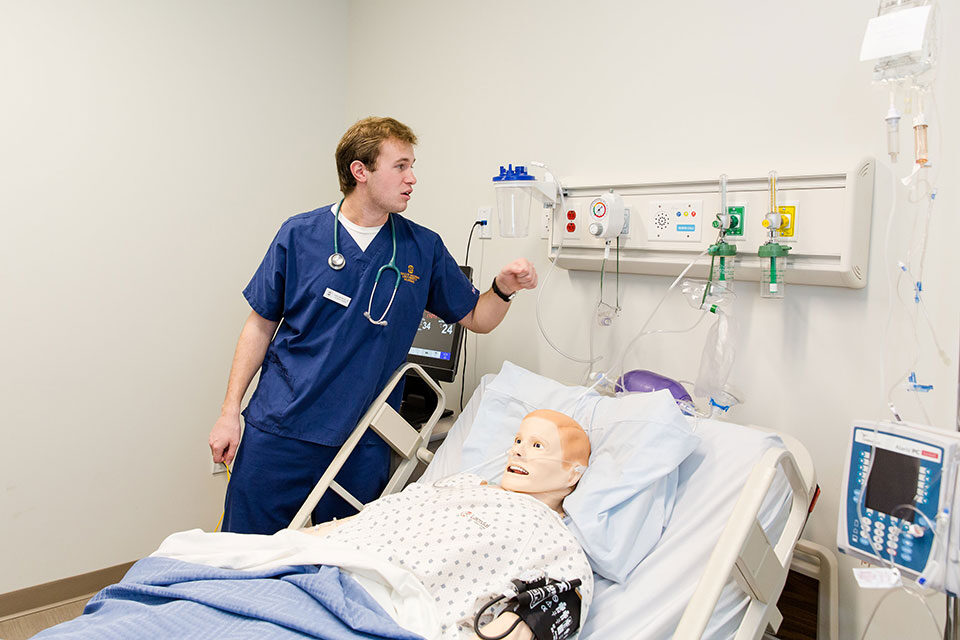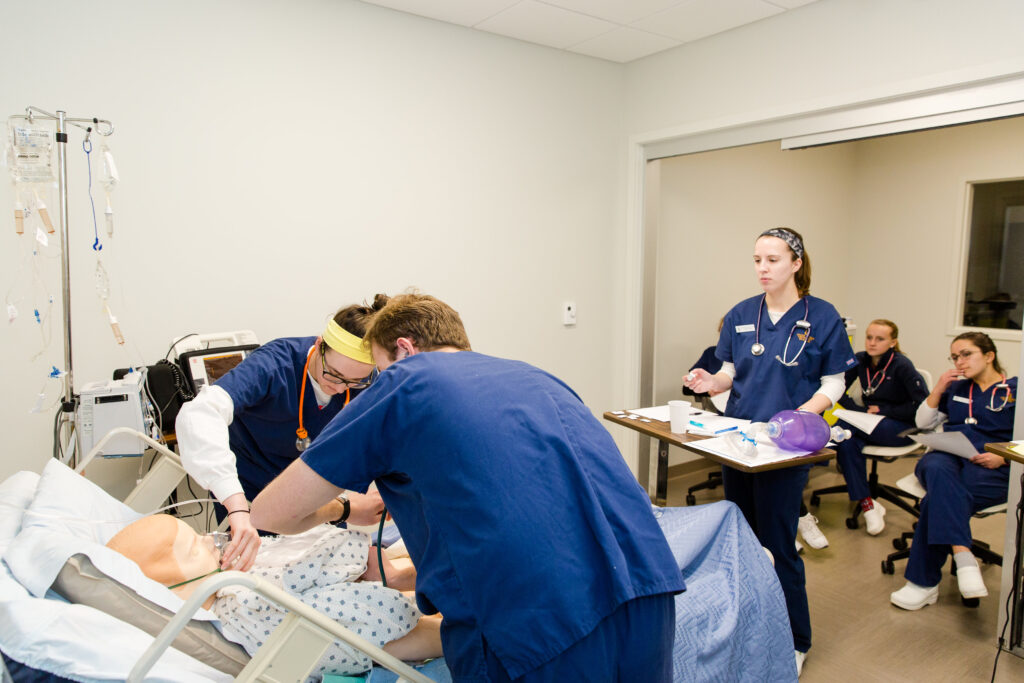Nursing department awarded Champlin grant for high-fidelity manikin in sim lab

From its blinking eyes and responsive pupils to its spontaneous breathing and seemingly limitless number of programmable illnesses, a highly sophisticated new patient equipped with the latest in medical simulation learning technologies will be moving into Salve Regina’s nursing lab for an extended stay thanks to a $84,621 grant from The Champlin Foundation.
With the funding, Salve Regina’s Department of Nursing will purchase SimMan 3G Plus, known in the medical field as a high-fidelity manikin, on which students will practice their clinical skills in the University’s nursing simulation lab in O’Hare Academic Building. The sim lab is already home to 10 such manikins, “patients” of all ages from newborns and toddlers to adults, including five high-fidelity, three medium-fidelity and two low-fidelity devices.
The new SimMan 3G Plus is upgraded with many features not available in older 3G manikin models, including heightened realism and new learning bundles detailing a myriad of real-life medical scenarios. It will be capable of representing a diverse array of patients with interchangeable face skins, articulating limbs for improved clinical utility, and will allow for students to use real clinical devices to assess and monitor vital signs, heart sounds, breath sounds, administer medications, evaluate patient response to treatment and more.
“As a teaching methodology, simulation training for students enhances critical thinking skills, strengthens clinical decision making, and provides vital experience in the practice of clinical procedures leading to improved patient safety and outcomes in the healthcare environment,” said Debra Cherubini, assistant professor and chair of the Department of Nursing.
Changes in the National Council Licensure Examination, the national test to become a nurse, are placing an emphasis on evaluating critical thinking skills, so it’s also important to position Salve Regina’s updated and expanded sim lab as a critical teaching tool to better prepare students for successful outcomes in taking the exam and securing their license to practice.
The lab’s high-fidelity manikins have the technology to talk back to students, providing human-like responses during treatment, important feedback for students when practicing proper administration of medication dosages and setting intravenous fluid rates.
Cameras in the lab record student responses as they move through real-life scenarios interacting with both patients and families. Students can review their performance with instructors to assess strengths and weaknesses in their physical assessment skills and clinical performance.
“By working with both low- and high-fidelity manikins, nursing students can practice a wide range of skills in a simulated hospital environment, from providing physical care, administering medications and treatments, and intervening in emergency situations,” Cherubini said.
Salve Regina’s sim lab features the same manikins used at medical schools around the world, and the University has ongoing partnerships that provide access to the technology for professional development opportunities. Newport Hospital staff have used the sim lab for emergency room training procedures that included Newport Fire Department personnel. And a partnership with the Rhode Island Division of Elderly Affairs’ respite care project provided its students access to the lab for training in palliative and end-of-life nursing care. Future outreach efforts include a plan to support EMT training.


